Pupusas, the national dish of El Salvador, is a simple and affordable recipe to make. Stuff them with cheese, beans, or meat, and fry them up for a filling snack or lunch!
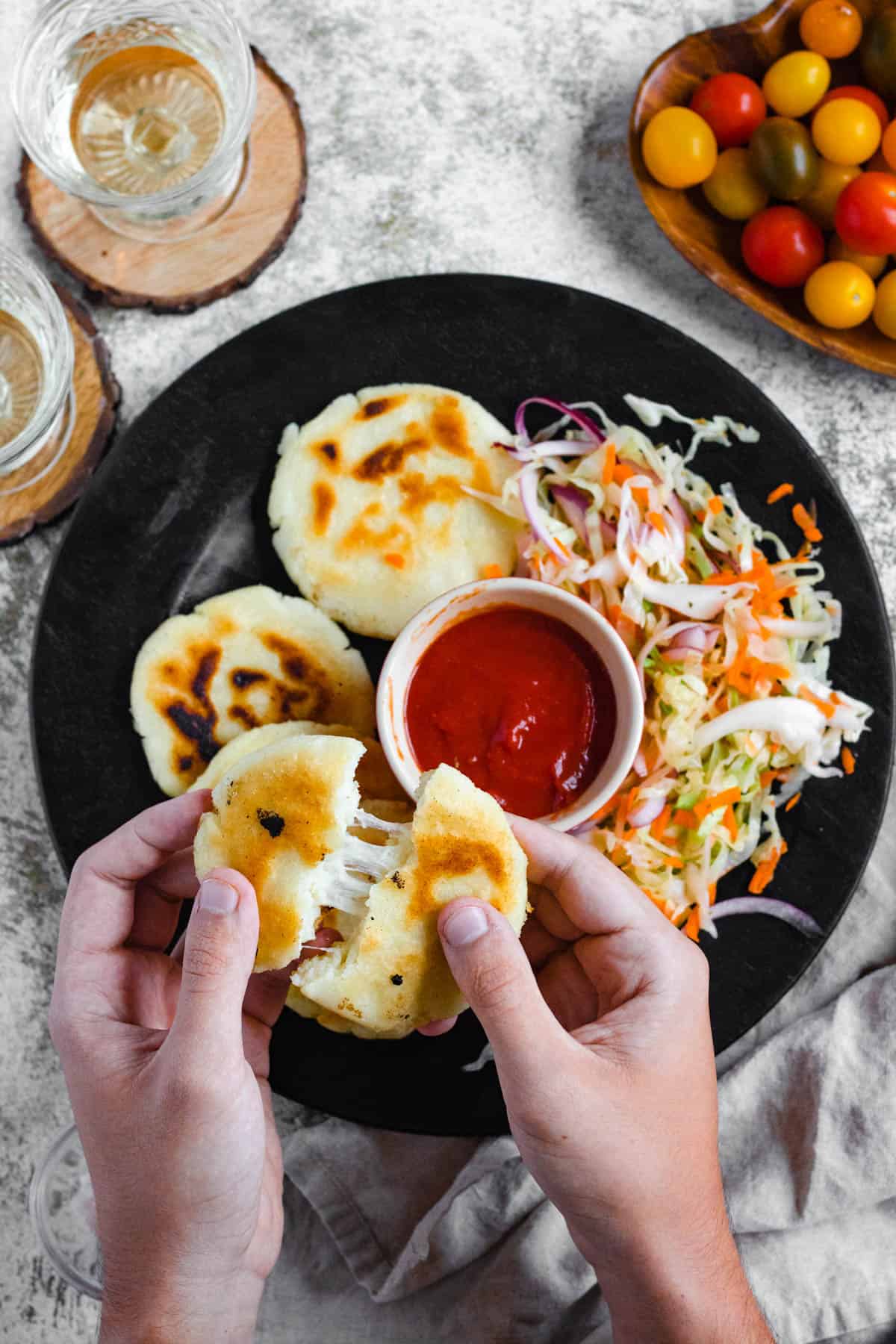
Hello Reader! I try my hardest to research recipes as best as I can before posting to ensure I am representing each culture correctly. If this recipe is from your country and I have made a mistake or you have suggestions for how to make it more authentic, I would love to hear! Please leave a comment below letting me know what should be different, and I will rework the recipe. It is always my intention to pay homage and respect to each cultural dish that I cook. Thanks for reading!
Pupusas are one of those dishes that have been passed down from one generation to the next without a recipe. They are made with simple ingredients, and the cooking process is easy enough to involve everyone in the family.
They are also a perfect comfort food that sticks in a person’s memory once you’ve tried them.
Hot and fresh off the griddle, these delicious masa cakes, which taste like a thick corn tortilla, are filled with a variety of fillings… but more often than not, they contain ooey, gooey cheese.
They are a popular, affordable Salvadoran meal perfect for a family feast but also quick enough for a snack, lunch, or dinner on the go!
Recipe Origins
Pupusas originated from the Pipil tribe that used to live in what is now El Salvador. There have even been remains of the Pipil tribe’s tools used to cook pupusas found from around 2000 years ago!
Pupusas saw a shift in the Pre-Columbian vs Post-Columbian era. Prior to 1570, they were filled mostly with herbs, vegetables, and flour. In 1570, meat began to be incorporated into the filling as well.
On April 1, 2005, Pupusas were declared the national dish of El Salvador! Every second Sunday of November is National Pupusa Day.
Why Make This Recipe
- 4 Ingredients: This recipe only has a few ingredients and is incredibly affordable to make! Once you have the ingredients in your home, you can easily make authentic Pupusas as a delicious snack from here on out!
- Prepare Together: Pupusas are a great meal to cook with friends or family. Everyone can help make pupusa dough and stuff their favorite ingredients inside. Plus t’s always more fun to eat something you made together!
- “Travel” to El Salvador: If you’ve always wanted to go to El Salvador but aren’t able to, this recipe is a great one to try out! You can taste the national dish of El Salvador easily, without ever having to leave your home.
What Do I Need For this Recipe?
Ingredients
Here is a visual overview of the ingredients in the recipe. Scroll down to the recipe at the bottom for quantities.
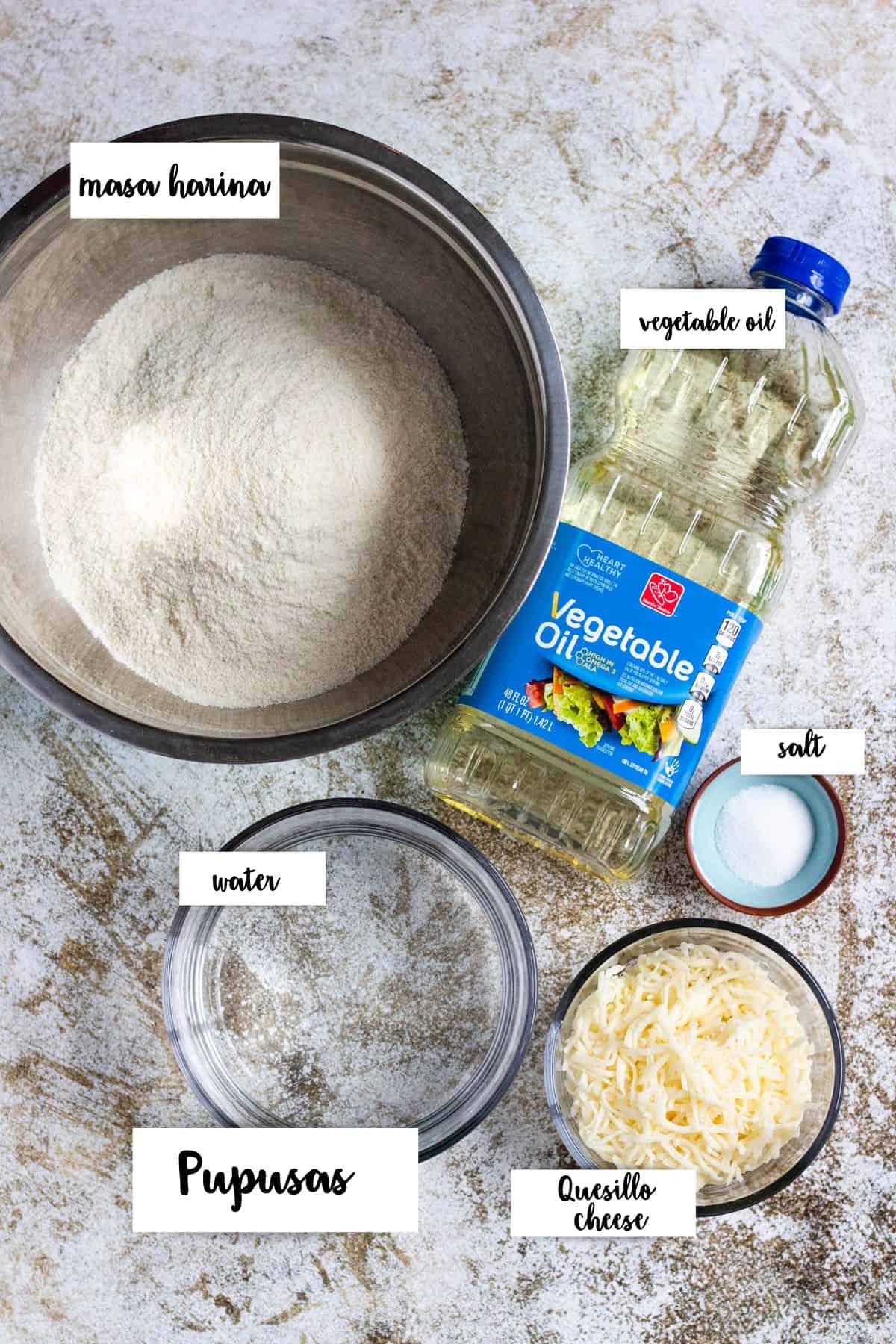
- Masa Harina: Masa harina comes from grinding corn up. I used white masa harina for this recipe, though it also comes in yellow. White masa harina is a bit sweeter than yellow masa harina.
- Salt: I use Kosher salt, but you can use table salt
- Cheese: Use quesillo cheese if you can find it! I was able to find some at Compare Foods, but it should be available at any local Mexican grocery store. If you cannot find quesillo cheese, you can substitute mozzarella.
- Oil: The oil is meant to cook the pupusas. I used vegetable oil, but you can use any oil with a low smoking point. Another good option is sunflower oil!
How to Make this Recipe
Step 1: Make the Dough
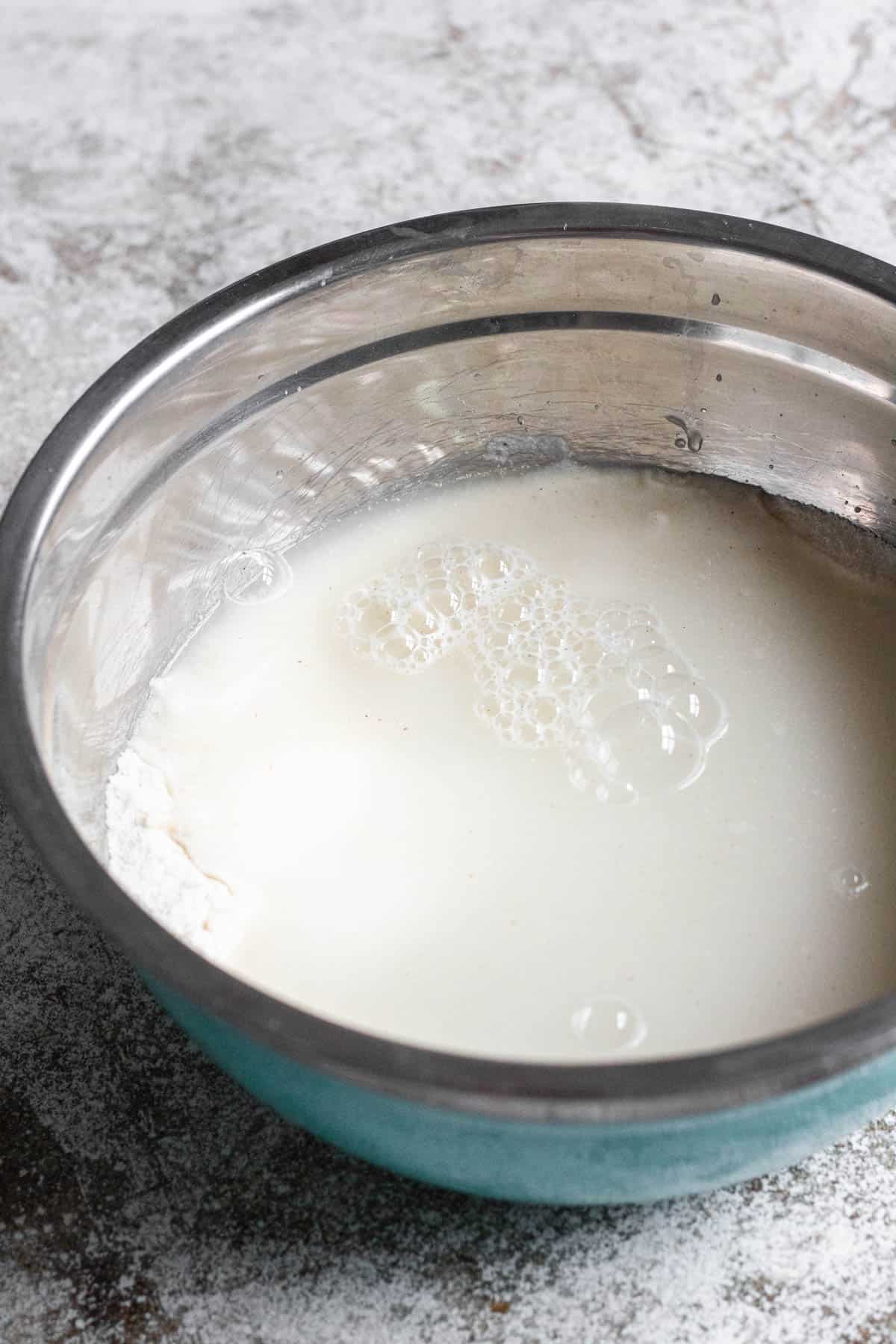
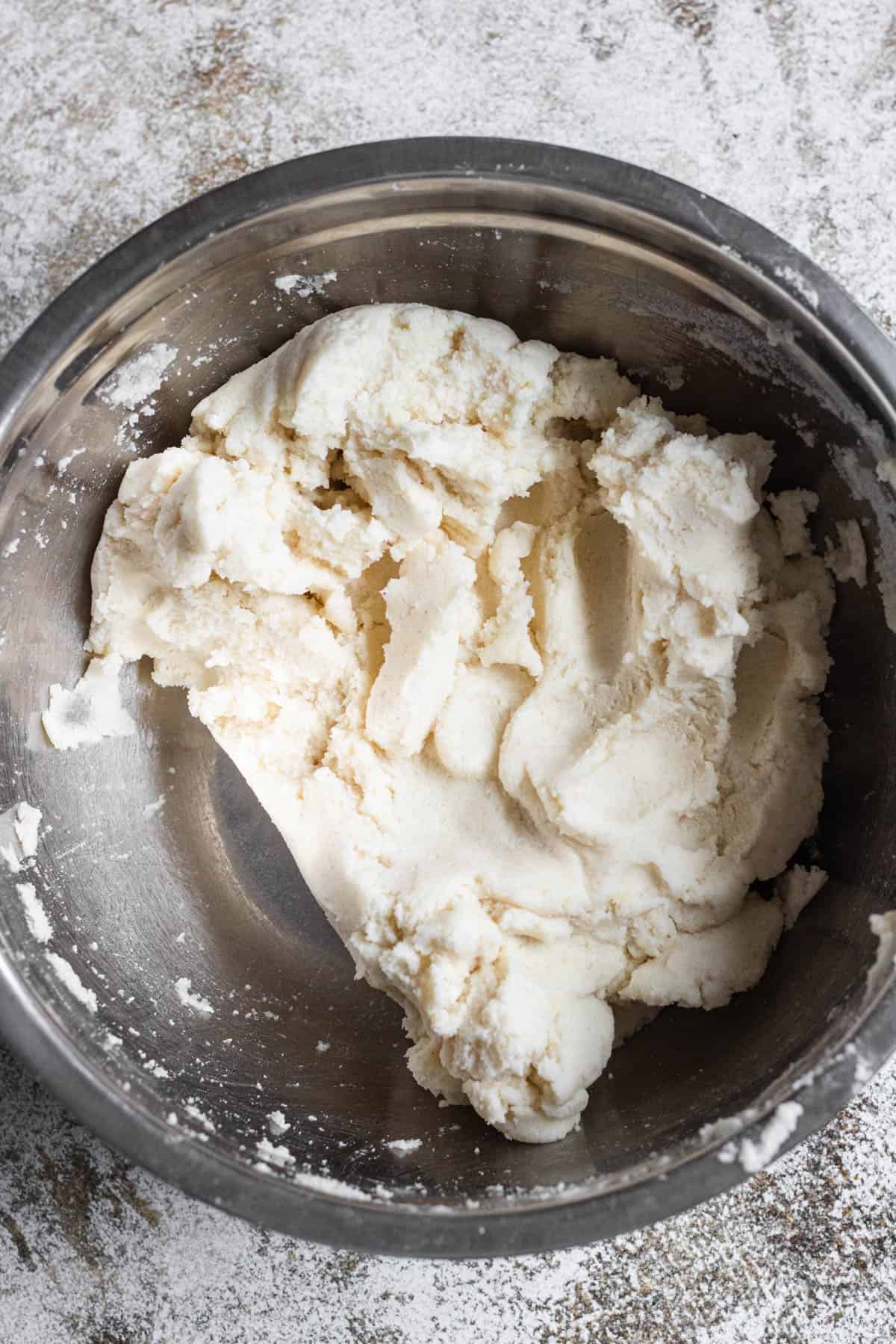
In a mixing bowl, whisk together salt and masa harina. Then add the water.
Knead the dough with your hands until it forms a Play-Doh-like consistency.
Step 2: Form the Pupusas
Form the dough into balls in 12 equal balls about 2 inches in diameter. Use your fingers to form a pocket in the middle of the dough ball, leaving the edges thick.
Add about 2 tbsp of shredded cheese in the middle of the pupusa dough. Then use the edges of the dough to cover the cheese pocket, sealing off the pupusa.
Wet your hands lightly in water or oil, and use your hands to gently flatten the pupusa into a disk.
Step 3: Cook the Pupusas
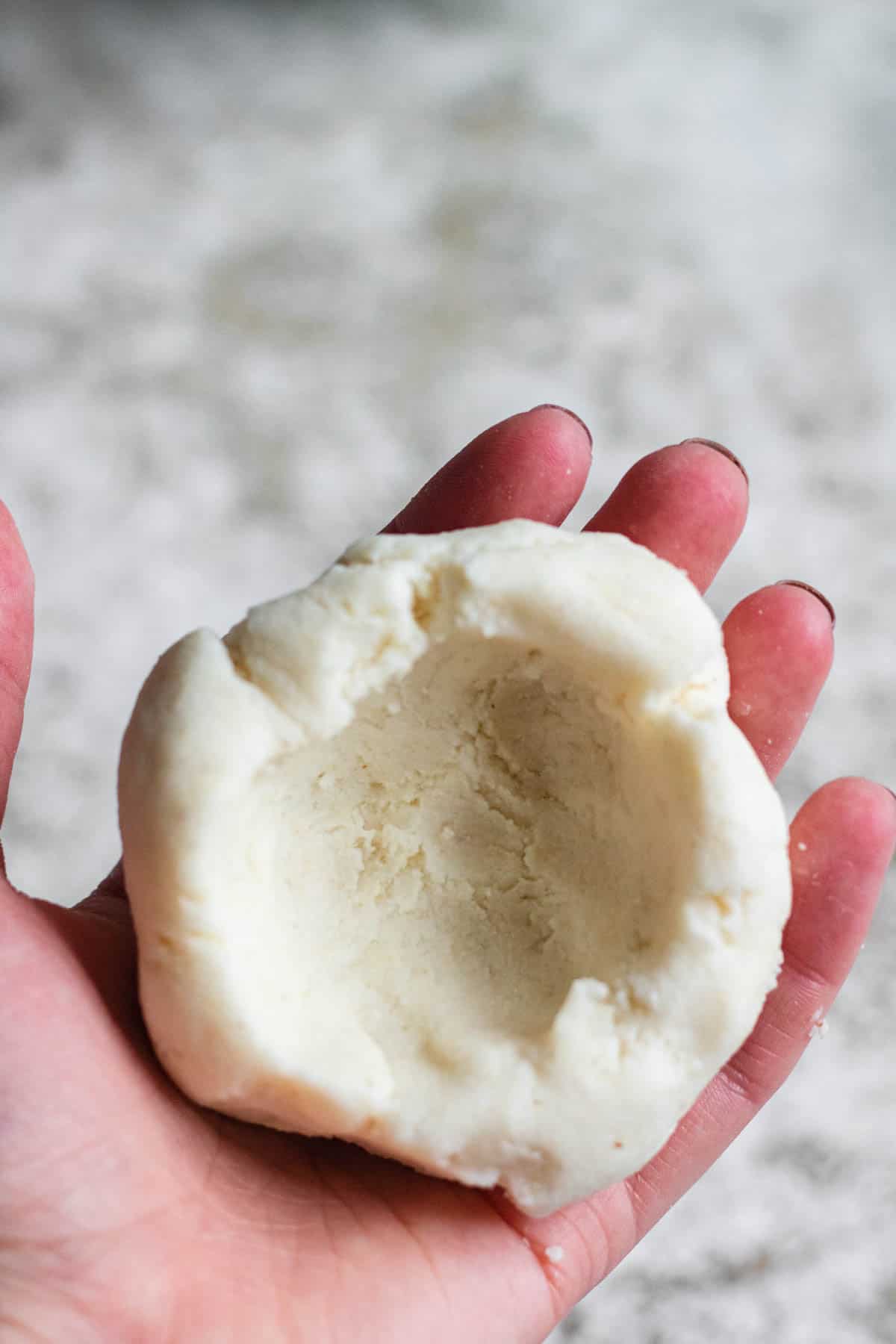
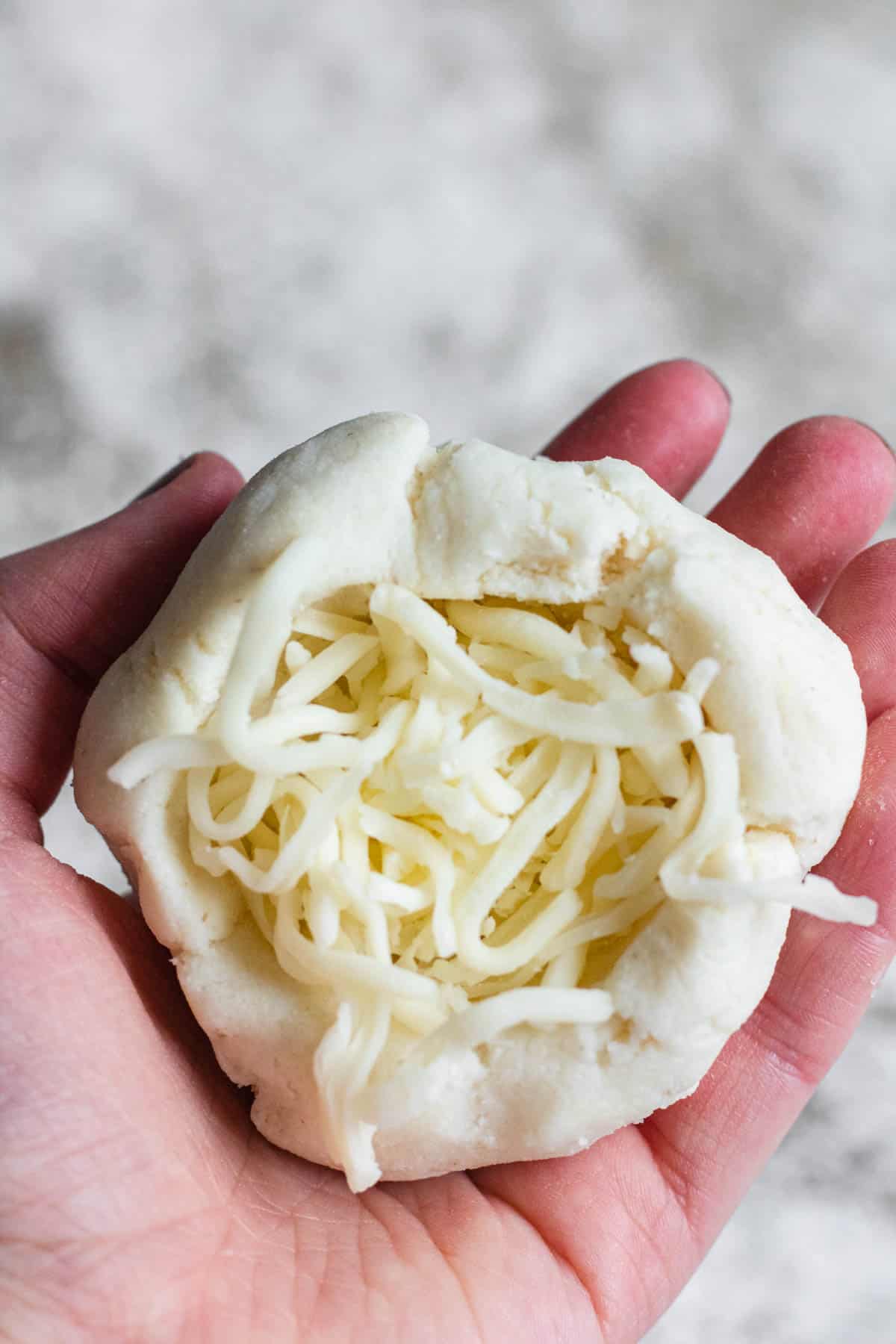
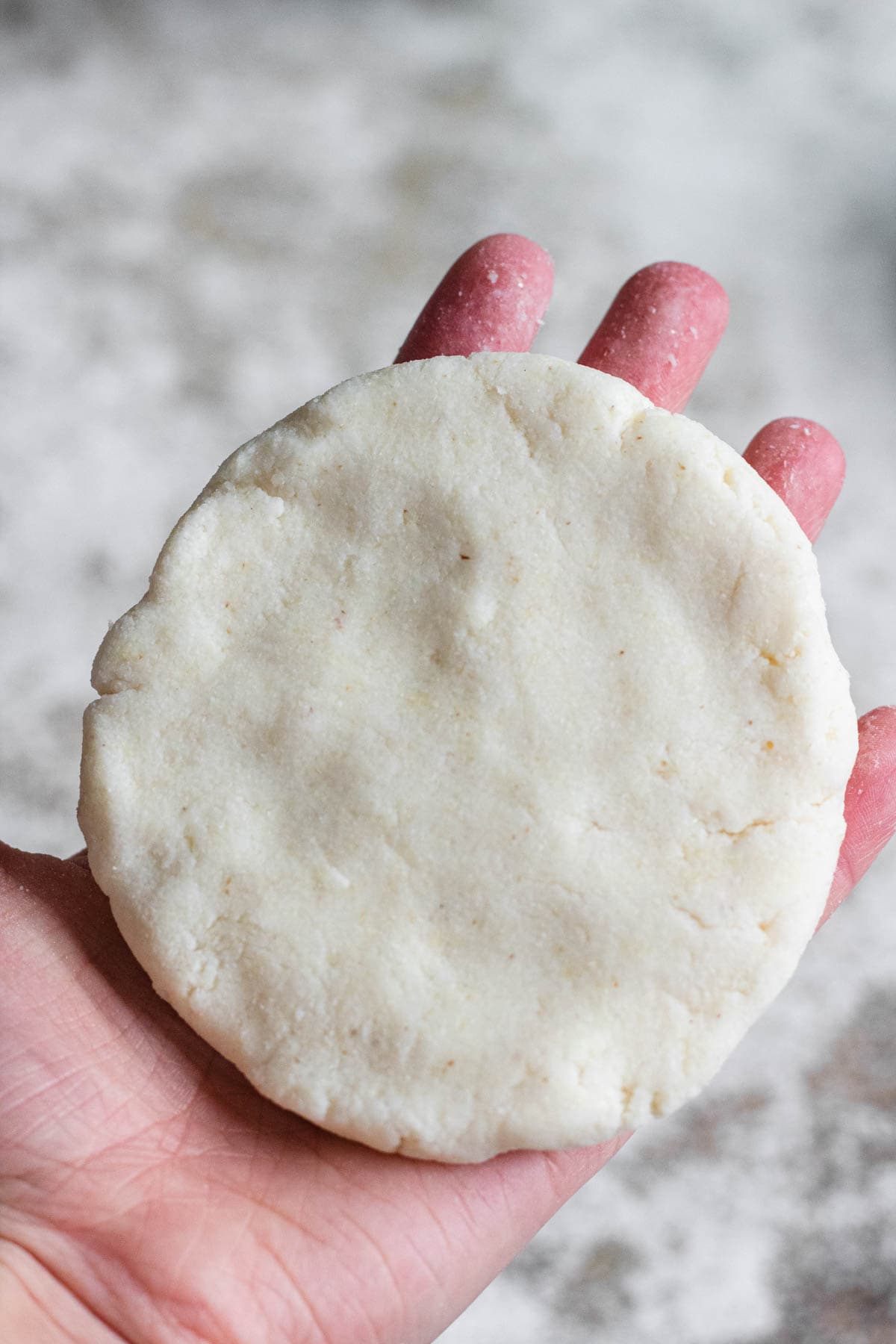
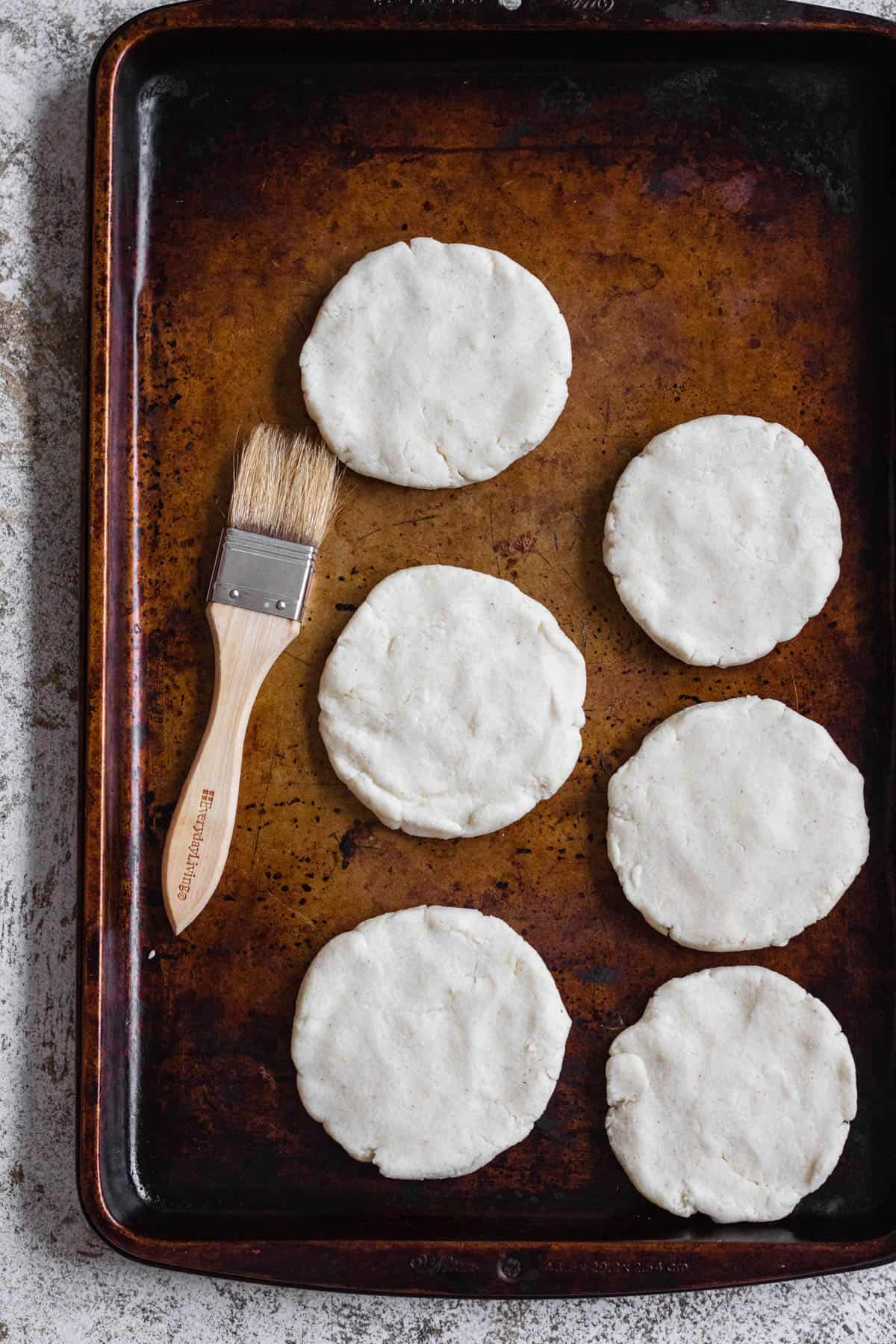

Heat a cast iron skillet over medium heat, and brush lightly with vegetable oil.
Add the pupusa into the pan, and cook for about 3-5 minutes on one side, until the outside is crispy and begins to turn brown. Flip the pupusa and grill again on the other side.
Repeat this process, re-oiling the skillet between each batch.
Serve with salsa and curtido and enjoy!
Filling Options
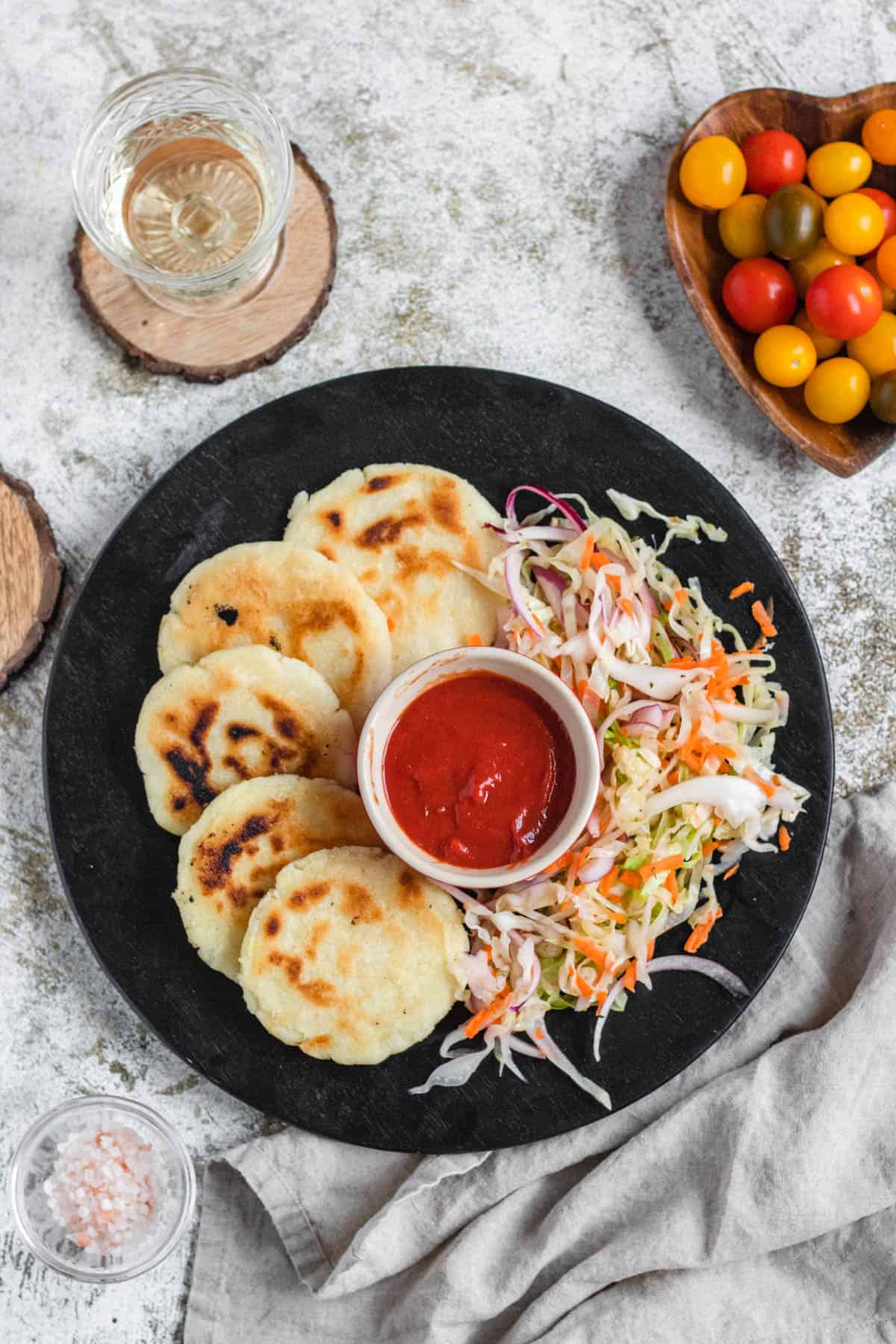
This recipe is for very simple cheese pupusas but you can fill your pupusas with anything you want! Some of the below are traditional filling options, while others are not. Here are a few ideas:
- Traditional Filling Options: Refried Beans; Cheese and Refried Beans; Chicharon and Cheese; Just Chicharon; or Cheese, Refried Beans, and Chicharon.
- Meat: Any seasoned, shredded meat would be delicious in pupusas. Choose something shredded so that it folds nicely into the center of your dough ball. You can use beef, chicken, pork, chorizo, or your favorite taco meat
- Beans: A great vegetarian protein option is beans! Try pinto beans, refried beans, or black beans.
- Cheese: Cheeses that melt easily are the best choice. The traditional option is quesillo cheese, but you can also use options like mozzarella cheese, Oaxaca, cheddar, or fontina. You could also use vegan cheese!
- Vegetables: Squash, zucchini, peppers, onions, or mushrooms would all be great. You could also add diced jalapenos or salsa.
- No Filling: You don’t have to fill your Pupusas with anything if you don’t want to. You can leave them plain.
Curtido is a pickled cabbage and carrots that provides an excellent balance to the flavor and is one of the most traditional toppings. Curtido is easy to make with some cabbage, carrots, oregano, vinegar, salt, and sugar.
Be careful not to add too much of anything that will be juicy as it may make your pupusas fall apart!
Whatever filling you use, use just a little bit so it’s not too tough to close up. You only need a tablespoon of beans, possibly two, to fill the whole thing with flavor.
Expert Tips

- Use a large ice cream scoop to scoop your dough for equal-sized balls. This makes your cooking time more consistent when the corn tortillas are the same size.
- Your dough should be the consistency of soft Play-Doh. If you find that your dough is too sticky to work with, you can mix a little bit of oil and water onto your hands. Having moist fingers makes it easier to form the balls without the dough sticking.
- Once your pupusas are formed it is helpful to lay them on parchment paper, plastic wrap, or foil until they are ready to be cooked. This makes it easier to pick them up without them sticking and falling apart.
- If your pupusa cracks, just pinch the dough back together before cooking to keep your filling inside. You could also add a piece of dough over the crack to help fill it in.
- If you are making a big batch of pupusas, keep them warm on a tray in the oven until ready to serve.
Topping Ideas for Pupusas
There are so many delicious recipes you can serve alongside your pupusas! Here are some great options below:
- Curtido
- Salsa
- Guacamole
- Rice and Beans
- Refried Beans
- Fried Sweet Plantains
- Or anything else that sounds delicious!
Another Tip for Rolling Your Pupusas
Follow this tip for another way to make the Pupusa disks:
- Grab a gallon-sized Ziplock bag and cut it open on the sides, leaving only the bottom intact.
- Make the masa balls and put one between both plastic flaps, then smush the dough with a plate.
- Do this before filling, then place the filling inside the dough and roll the dough into a ball again.
- Once the dough is in a ball again, place the filled dough between the plastic flaps and smush again with a plate, flattening the dough into the Pupusa shape.
Can You Make Pupusas Ahead of Time?
It is possible to make pupusas and store them in the freezer until you are ready to cook them. This is a great recipe for using up leftover meats!
Make your dough and stuff your pupusas like you would normally but before cooking the pupusas, lay them on a lined baking sheet and put them in the freezer instead.
Once frozen, transfer the pupusas to an airtight container or ziploc bag for storage. Frozen pupusas can be stored for several months. Thaw pupusas in the refrigerator before cooking on a skillet as normal.
What Do You Serve With Pupusas?
Pupusas tend to be stuffed with filling that is heavy, like cheese and meat.
Make the curtido before you begin making the pupusas so it has time to pickle and soak up more flavor.
You can also serve pupusas with some salsa roja, salsa verde, sour cream, or hot sauce.
I would recommend serving some roasted vegetables as a side to further balance out the cheesy or meaty flavor of the pupusas.
Alternate Cooking Methods
Pupusas are traditionally made on a skillet or hot griddle, but you could bake them or even air fry them. Make sure the cooking surface is oiled.
Oven
To cook your pupusas in the oven, preheat the oven to 375 degrees Fahrenheit. Oil a cookie sheet, then place the pupusas on top. Cook the pupusas for about 15 minutes, flipping halfway through.
Air Fryer
To cook your pupusas in the air fryer, preheat the air fryer to 400 degrees Fahrenheit. Oil the air fryer basket, then place the pupusas on top. Cook the pupusas for about 4 minutes, flipping halfway through.
Freezing Pupusas
If you make too many pupusas and need to set some aside for later, follow these steps:
- Place the assembled but uncooked pupusas on a baking sheet and place the baking sheet in the freezer.
- Once the pupusas are frozen, remove them from the baking sheet and place them in a gallon ziplock bag and write the date on the container.
- You can cook your pupusas directly from frozen! They will stay good in your freezer for about 3-4 months.
Recipe FAQs
I also have a recipe for Arepas from Colombia on my website. Arepas are pretty similar to pupusas, though there is a slight difference between the two!
The main differences are that arepas are made with masarepa, while Pupusas are made with masa harina. Both are cornflours, but masarepa is precooked.
The other major difference is that arepas are stuffed with fillings AFTER cooking, whereas pupusas are filled prior to cooking.
As mentioned in the “Recipe Origins” section above, Pupusas have a long history in El Salvador. The recipe is now the national dish of the country and is eaten quite frequently in El Salvador as well as in the United States.
You can also enjoy the flavors of El Salvador with this recipe for Pan con Pollo Salvadoreño… so yummy!
While pupusas and tamales are made with the same kind of flour, tamales also have oil and lard whereas pupusas do not. Based on this, they are not a good substitute for one another.
Pupusas are made with corn flour that is gluten-free! Be sure and double-check that any filling you use is gluten-free. Some canned ingredients, like refried beans, may have gluten as an allergen.
If you enjoyed this Pupusas Recipe, make sure to check out these other recipes I picked out just for you:
- Arepas from Colombia
- Homemade Creamed Corn in the Instant Pot
- Shrimp Soup from El Salvador
- Espumillas from Ecuador
- Elote Loco
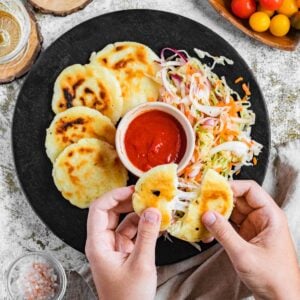
Pupusa Recipe from El Salvador
Equipment
- Whisk
- Box Grater
- Mixing Bowl(s)
- Cast Iron Skillet
Ingredients
- 2 tsp kosher salt
- 3 cups masa harina
- 2 ¾ cup water
- 1 ½ cups Quesillo Cheese, can sub shredded mozzarella
- Vegetable oil for cooking
Instructions
- In a mixing bowl, whisk together 2 tsp salt and 3 cups masa harina. Then add the 2 ¾ cup water. Knead the dough with your hands until it forms a playdoh-like consistency.
- Form the dough into balls in 12 equal balls about 2 inches in diameter. Use your fingers to form a pocket in the middle of the dough ball, leaving the edges thick.
- Add about 2 tbsp of shredded cheese in the middle of the pupusa dough. Then use the edges of the dough to cover the cheese pocket, sealing off the pupusa.
- Wet your hands lightly in water or oil, and use your hands to gently flatten the pupusa into a disk.
- Heat a cast iron skillet over medium heat, and brush lightly with vegetable oil.
- Add the pupusa into the pan, and cook for about 3-5 minutes on one side, until the outside is crispy and begins to turn brown. Flip the pupusa and grill again on the other side.
- Repeat this process, re-oiling the skillet between each batch.
- Serve with salsa and curtido and enjoy!
Notes
- Masa Harina: Masa harina comes from grinding corn up. I used white masa harina for this recipe, though it also comes in yellow. White masa harina is a bit sweeter than yellow masa harina. Salt: I use Kosher salt, but you can use table salt
- Cheese: Use quesillo cheese if you can find it! I was able to find some at Compare Foods, but it should be available at any local Mexican grocery store. If you cannot find quesillo cheese, you can substitute mozzarella.
- Oil: The oil is meant to cook the pupusas. I used vegetable oil, but you can use any oil with a low smoking point. Another good option is sunflower oil!
- Use a large ice cream scoop to scoop your dough for equal-sized balls. This makes your cook time more consistent when the corn tortillas are the same size.
- Your dough should be the consistency of soft play-doh. If you find that your dough is too sticky to work with, you can mix a little bit of oil and water onto your hands. Having moist fingers makes it easier to form the balls without the dough sticking.
- Once your pupusas are formed it is helpful to lay them on parchment paper, plastic wrap, or foil until they are ready to be cooked. This makes it easier to pick them up without them sticking and falling apart.
- If your pupusa cracks, just pinch the dough back together before cooking to keep your filling inside. You could also add a piece of dough over the crack to help fill it in.
- If you are making a big batch of pupusas, keep them warm on a tray in the oven until ready to serve.





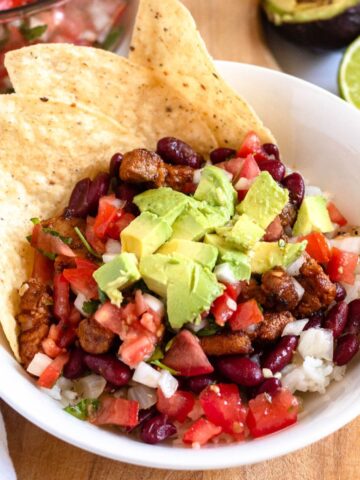








Angela says
I think the problem that people are experiencing is that the water should be hot when you add it, then covered and left to sit for awhile so that the masa can have time to absorb the liquid and hydrate. Also, if you make a ball out of the cheese, then flatten the dough, you can surround the cheese with the dough disk and flatten again. It’s easier than trying to fill it pocket-style.
Alexandria Drzazgowski says
Great tips, Angela! Thank you!
Patricia says
I made this recipe yesterday with no issues, it was yummy! I made it today with different masa mix and it seemed with this measurements of masa to water it was too watery so I had to gradually add more masa mix along with kneading to give it the right consistency so It sounds like the above comment that says it was too watery was having that issue but once you get that figured out it tastes great! Thank you for this recipe. 🙂
Alexandria Drzazgowski says
That is great insight Patricia. It’s good to know that different masas may react differently. I appreciate your comment and am so happy that you love the recipe!
Libdsay says
yummy! My family loved these. Really easy recipe to follow. I doubled it and made them on my Blackstone and cooked them all in one huge batch. Quick and easy 🥰
Ami Labrum says
These were delicious! They came out prefect. My family is obsessed with pupusas and these were a hit!
LHines says
Absolutely terrible. way too much water. inedible. horrible. just go for a more advanced recipe
The Foreign Fork says
Hi Luka, Did you continue to knead the dough? It starts off a little wet, but the more you knead, the dough will come together.
Jamal says
did not work grrrrrr my mom makes better.
The Foreign Fork says
Hey Jamal, what about the recipe did not work? I’d be happy to investigate or make suggestions depending on the issue you had 🙂
Molly says
I made these today and they tasted almost like the ones we get from a local Salvadorian restaurant! Thanks for the recipe. I used a mix of mozzarella and jack and some with refried beans and cheese. To make it more authentic, I’m going to try to get quesillo and loroco next!
The Foreign Fork says
Hi Molly,
I’m so glad you like the recipe 🙂 Loroco sounds delicious, I hope you enjoy!
Michelle says
Living in El Salvador. They don’t use oxacan blend cheese. The cheese used for Salvadoran pupusas is Quesillo cheese. Traditional fillings are just the cheese, cheese and refried red beans, cheese, beans, and la roco, and if you want meat cheese, beans and Salvadoran chicharon. If you ask a Salvadoran to put carne in you are going to get a pastele
David Rios says
Everything was pretty good except that we never stuff them with taco filling or with jalapeños, that would not be a pupusa. You can stuff it with cheese, refried beans, cheese and chicharon. If you want to keep it authentic and not try to americanize it.